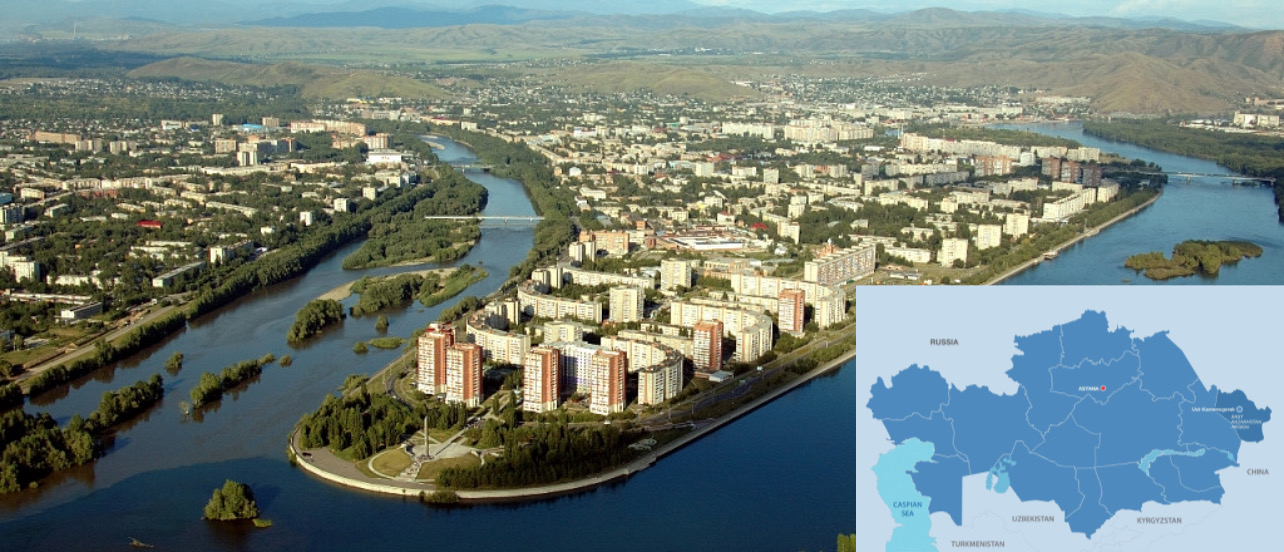Editor’s Note: This article is part of a series on the economic and investment potential of Kazakhstan’s regions. The Astana Times has previously published economic profiles on the Abai Region, Akmola Region, Aktobe Region, and Karagandy Region.
ASTANA – The East Kazakhstan Region is located in the northeastern part of the country with the city of Ust-Kamenogorsk as its administrative center.

Oskemen city. Photo credit: weproject.media. Click to see the map in full size. The map is designed by The Astana Times.
President Kassym-Jomart Tokayev appointed Yermek Kosherbayev as the new Akim (Governor) of the East Kazakhstan Region on June 16. Before that, he served as the Ambassador of Kazakhstan to Russia.
Economic potential of the region
The region is the country’s largest industrial center, with key sectors including nonferrous metallurgy, metalworking, agriculture, forestry, woodworking, and the food industry.
Over the past decade, the industrial production volume increased 2.2 times and totals 2.2 trillion tenge ($4.9 billion). The number of entrepreneurs has increased by 20% to 95,000, according to the Economic Research Institute.
Based on the high economic potential of the region, several projects are being developed, including the construction of a meat processing plant and the expansion of broiler production, leading to a 19% increase in gross output of agricultural products in monetary terms, with livestock seeing a 29% increase.
Other developments include an expansion of a dairy farm, and the commissioning of a nuclear plant for fuel assembly production, with a capacity of 200 tons of uranium per year, which will increase the volume of the region’s exports by 150 billion tenge ($333.7 million) per year by 2024.
There is an anticipated increase in sunflower processing volume as the region grows over two-thirds of all sunflower crops in the country. In 2022, the harvest of sunflower seeds increased by 11.6%, reaching 358,500 tons.
The key areas of growth are aqua farms, the transport infrastructure, and the tourism sector.
Tourism attraction
The number of tourists climbed by 20% to almost 500,000 visitors yearly. The region has become a popular destination for adventure seekers, nature lovers, and cultural enthusiasts worldwide. Must-visit locations include Sibinskie Lakes, a system of five lakes with pure, clear water surrounded by the picturesque landscape of granite mountains, and Kiin-Kerish Valley, a deposit of variegated clays exposed by erosion. It is located in the Kurchum Region 315 kilometers from Ust-Kamenogorsk. Another tourist location is Mount Muztau, which is the highest mountain in Siberia.
Last year, over 5.4 billion tenge ($12 million) was invested in the tourism industry, and the region has begun implementing 36 projects worth more than 12 billion tenge ($26 million), including construction of twelve recreation centers located in the Bukhtarma Reservoir.
Areas for improvement
The region must prioritize the renewal of fixed assets in the energy sector, the reconstruction of its road network, and resolve a negative balance of migration that has surpassed 113,000 individuals in the last ten years, as well as labor shortages in various fields.
Water management systems also require attention, as the region is in need of clean drinking water and modern water-saving technologies.

